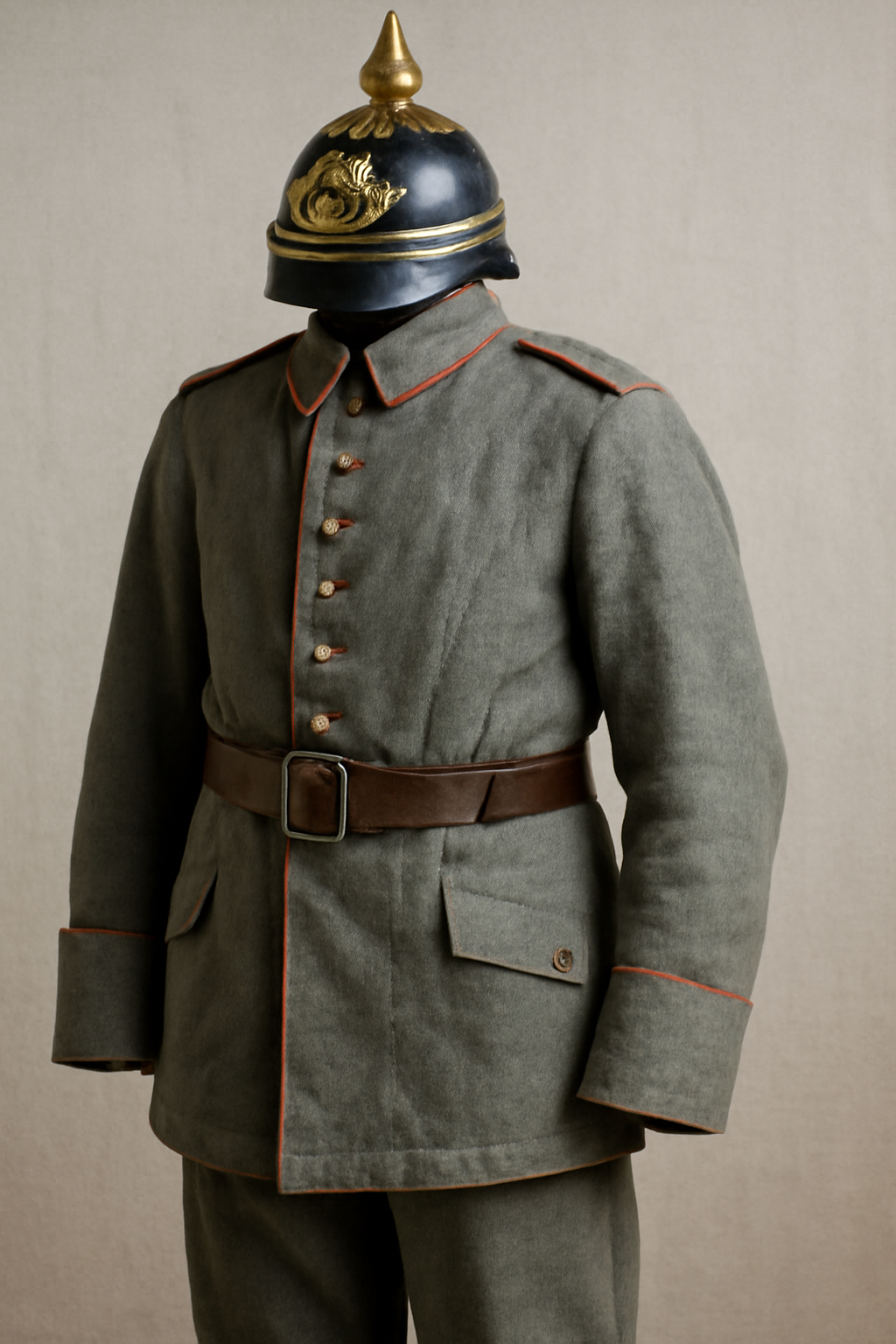
Complete Overview of German WWI Uniform Parts: Collectibles and Authentic Gear"
Published on Jul 16, 2025
The Complete Guide to German WWI Uniform Parts: A Collector's Dream
When it comes to historical military uniforms, few are as iconic and historically significant as the German WWI uniform. The intricate design and robust construction of the uniform parts have made them highly sought after by collectors, history buffs, and reenactors alike. This article will take you on a detailed journey through the various components of the German WWI uniform, offering insights into their historical relevance and what makes them so unique. Whether you're a seasoned collector or just starting your journey into the world of military uniforms, this guide will provide you with all the essential details to enhance your knowledge and make informed purchases.
Understanding the Key Components of German WWI Uniforms
German Army Coat: The Cornerstone of the Uniform
One of the most recognizable parts of the German WWI uniform is the German army coat. This heavy, woolen greatcoat was a crucial element of the uniform, providing warmth and protection during harsh winter campaigns on the Western Front. Made from durable wool, the coat was designed to withstand the wear and tear of battle. The coat’s distinctive cut, featuring a high collar and double-breasted front, was both functional and stylish.
The German army coat symbolized military discipline and pride, and its design influenced military outerwear for years to come. When looking for an authentic reproduction of this iconic garment, it’s important to focus on details such as the material, stitching, and buttons to ensure you get a true-to-period piece.
For those looking to explore quality German WWI uniforms, you can check out our German WW1 Imperial Army Uniform collection.
WW1 Cap: The Iconic Headgear
The WW1 cap is another essential component of the German WWI uniform. Known as the Pickelhaube, this spiked helmet was a symbol of the Prussian military and the German Empire during the war. It was made of metal, leather, or even a combination of both, and featured a spike on top, which made it instantly recognizable.
While the Pickelhaube became less common later in the war as a result of its impracticality, it remains a hallmark of German military gear during WWI. Today, collectors seek out these helmets for their unique design and historical importance.
The WW1 cap has become a focal point for those studying the era, and acquiring a genuine or high-quality reproduction can make a significant addition to your collection. You can read more about WWI German helmets and headgear in our blog about exploring historical military uniforms for sale.
World War 2 Greatcoat: A Link Between Two Eras
While the World War 2 greatcoat is technically from a different conflict, it is important to note the similarities and differences between it and the German WWI uniform parts. The WW2 greatcoat was a continuation of the German military tradition, providing warmth and protection to soldiers during colder weather.
The design of the World War 2 greatcoat was slightly more streamlined and less ornate than its WWI counterpart, reflecting the changing military needs and the evolution of German military fashion. However, both greatcoats were made from thick wool and had similar functional elements, including deep pockets and adjustable cuffs.
If you're interested in learning more about these iconic coats, you can browse our World War Two WW2 German Army Uniform collection.
German Trousers: The Unsung Heroes of the Uniform
When discussing German trousers, it's easy to overlook their importance in the overall uniform. These trousers were made of sturdy wool, designed to withstand the rigors of trench warfare. Unlike the more decorative elements of the uniform, the German trousers were a practical and utilitarian piece, providing comfort and mobility to the soldiers who wore them.
The trousers were typically worn with leather boots and were designed to fit snugly around the waist, with a button fly for ease of use. Over time, the design of these trousers evolved to incorporate elements of durability, such as reinforced knee patches and stronger stitching.
For more details on authentic German military attire, including trousers, check out our article on WW1 German uniforms and essential reproductions.
Authentic Reproductions: What to Look For
When searching for authentic German WWI uniform parts, it’s crucial to pay attention to the details. High-quality reproductions are made with careful attention to historical accuracy, using period-appropriate materials like wool and leather. Whether you are looking for a German army coat, WW1 cap, or German trousers, authenticity is key.
Here are some tips for identifying an authentic reproduction:
- Material: Wool, leather, and metal were the primary materials used in authentic German WWI uniforms.
- Stitching: Pay attention to the stitching. Period garments were hand-stitched, so any modern, machine-made stitching may be a sign of inauthenticity.
- Details: Look for unique features like the button placement, internal lining, and the distinct design of each piece.
Conclusion
German WWI uniform parts are more than just clothing—they are a link to history. From the iconic German army coat to the WW1 cap, each piece tells a story of the past, making them highly valued by collectors and enthusiasts alike. Whether you’re searching for an authentic uniform for your collection or simply want to learn more about these fascinating historical garments, this guide has provided you with the essential information you need.
For anyone interested in collecting German WWI uniforms, exploring quality replicas or authentic pieces is a rewarding experience. If you want to browse and purchase premium WWI uniforms, including German trousers, coats, and more, visit our online store for a curated selection of top-notch historical military attire.
